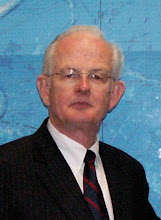I believe that very possibly the most asked question among believers in the Christian world is “What must I do in order to be saved?” The responses to this question very quickly demonstrate the grave confusion that exists among the pretenders of Christian truth on a subject so basic to the Lord’s teachings. Most of the questioners’ intent assumes the false conclusion that to be “saved” means being allowed to enter heaven as opposed to being consigned to hell after death. Those are the two grand and much over-simplified options mistakenly preached by a majority of the priests and ministers in the Christian world today. In previous posts to this blog, I have discussed in detail the modern-day revealed words of the Lord concerning the numerous and varied conditions in which the individual inhabitants of this world will find themselves for the duration of eternity. The Lord hinted at these conditions when He spoke of the “many mansions” that exist in His Father’s house (John 14:2). In spite of this confusion, we may be reasonably certain that what the typical Christian desires, when they inquire as to what is required on their part to be “saved,” is that they are able to live with God for the eternities and not with Lucifer.
That which we must do in order to return to our Heavenly Father was often the subject of the Lord’s instructions, and the requirements are few. To the Prophet Moroni the Lord said, “Therefore, repent all ye ends of the earth, and come unto me, and believe in my gospel, and be baptized in my name; for he that believeth and is baptized shall be saved; but he that believeth not shall be damned; and signs shall follow them that believe in my name” (Ether 4:18). To the Saints in America, the Lord said, “Repent, all ye ends of the earth, and come unto me and be baptized in my name, that ye may be sanctified by the reception of the Holy Ghost, that ye may stand spotless before me at the last day. Verily, verily, I say unto you, this is my gospel; and ye know the things that ye must do in my church” (3 Nephi 27:20-21). What is required of us in order that we may be saved in the Kingdom of Heaven is the subject of the Latter-day Saint Church’s fourth Article of Faith: “We believe that the first principles and ordinances of the Gospel are: first, Faith in the Lord Jesus Christ; second, Repentance; third, Baptism by immersion for the remission of sins; fourth, Laying on of hands for the gift of the Holy Ghost.”
Speaking from the standpoint of the ordinances required in order that we may be saved in the Kingdom of Heaven, the Lord has stated clearly that we must take upon ourselves the covenants inherent in the ordinances of baptism and confirmation and subsequently remain faithful to these commitments to the end of our days. Simply stated, these are the requirements.
However, imbedded in these few words is much that must be understood and done in order that the prescribed ordinances may be declared valid that is, justified by the Holy Ghost at some future point in time. The actions of faith and repentance must precede the ordinances of baptism and confirmation if the latter are to be eventually declared valid. The subjects of faith and repentance are worthy of their own individual discussions, which discussions will follow shortly in subsequent writings. For now it suffices to say that if the ordinances of baptism and confirmation are to effect their intended end namely, the remission of past sins, then faith and valid repentance on the part of the individual must have preceded the performing of the enumerated ordinances.
While it would seem understandable that proper priesthood authority would be necessary in order to have the ordinances of baptism and confirmation validated, not even this point escapes the confusion of the conflicted Christian world. Thus a simple declaration here will suffice namely, the Holy Priesthood of God, the Melchizedek Priesthood, was restored to the earth by Peter, James, and John by the laying on of hands to the Prophet Joseph Smith and Oliver Cowdery in 1829, and The Church of Jesus Christ of Latter-day Saints is the only Church upon the face of the earth that possesses and exercises this Priesthood in behalf of the true believers of Christianity.
However, this is not all that we should understand on the subject of “being saved.” What has not been stated here thus far is of eternal consequence. While it is true that satisfying the required performances of the ordinances of baptism and confirmation and remaining faithful will allow an individual to return to the presence of their Heavenly Father, these ordinances will not qualify them to fully satisfy their God-given potential. In order to fulfill our full potential, we must take upon ourselves, and remain faithful to, all of the covenants that are inherent in the ordinances of baptism, confirmation, receipt of the Melchizedek Priesthood, the endowment, and the new and everlasting covenant of marriage. Discussions concerning these additional ordinances will be presented later.
